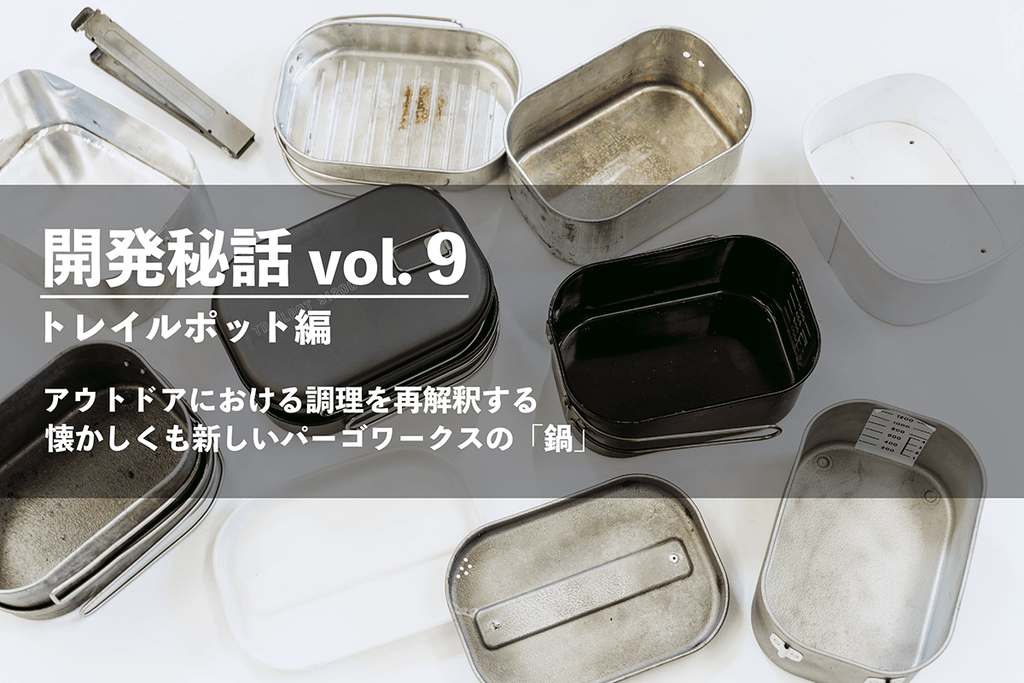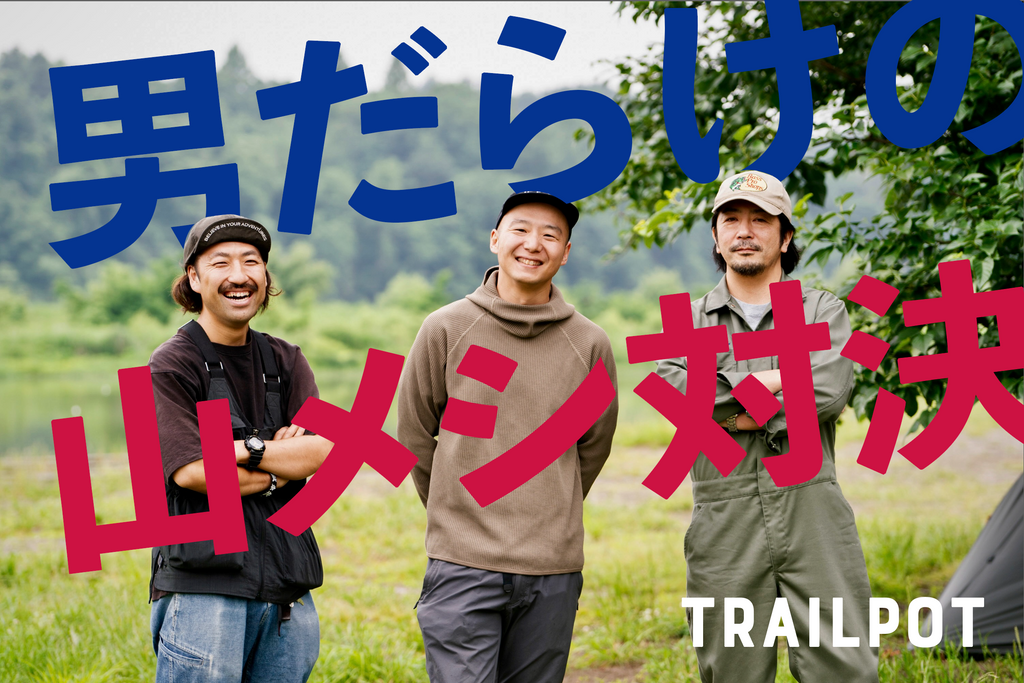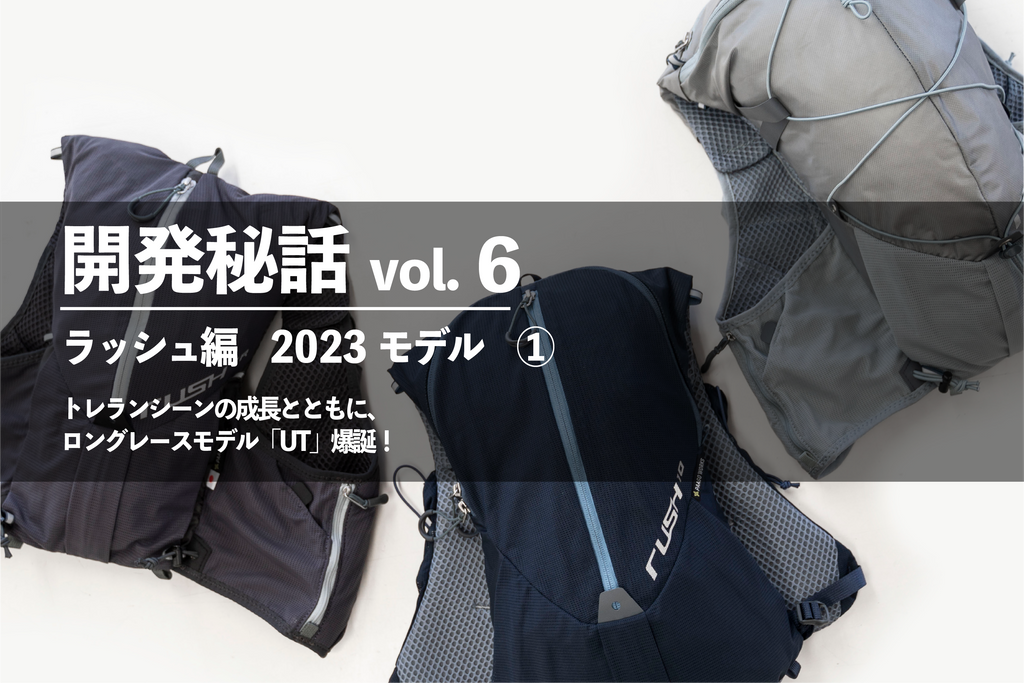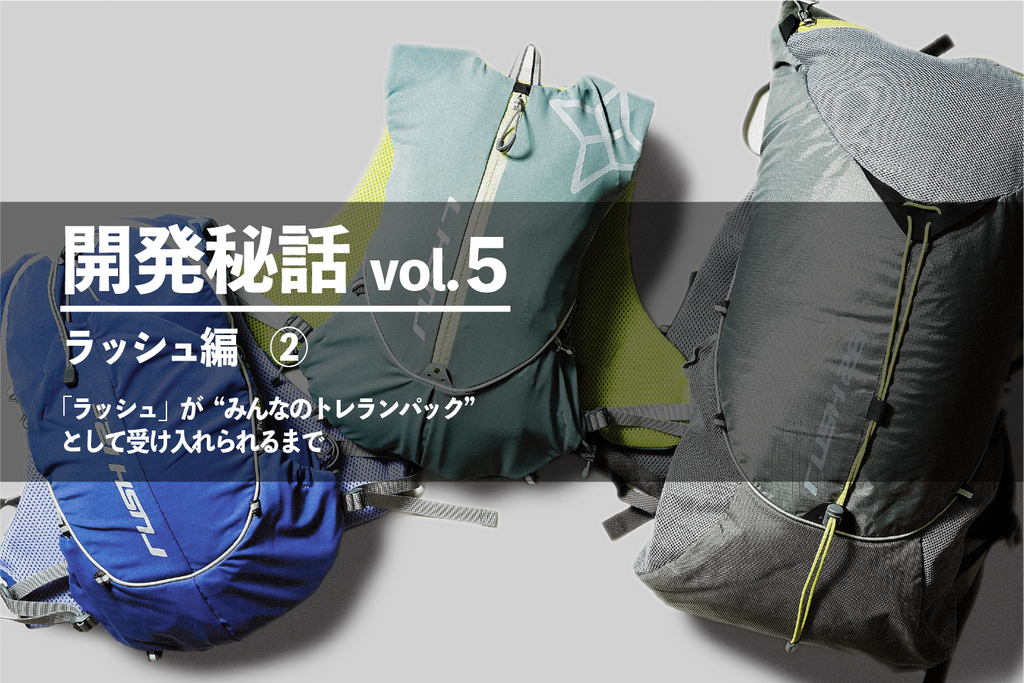MAGAZINE
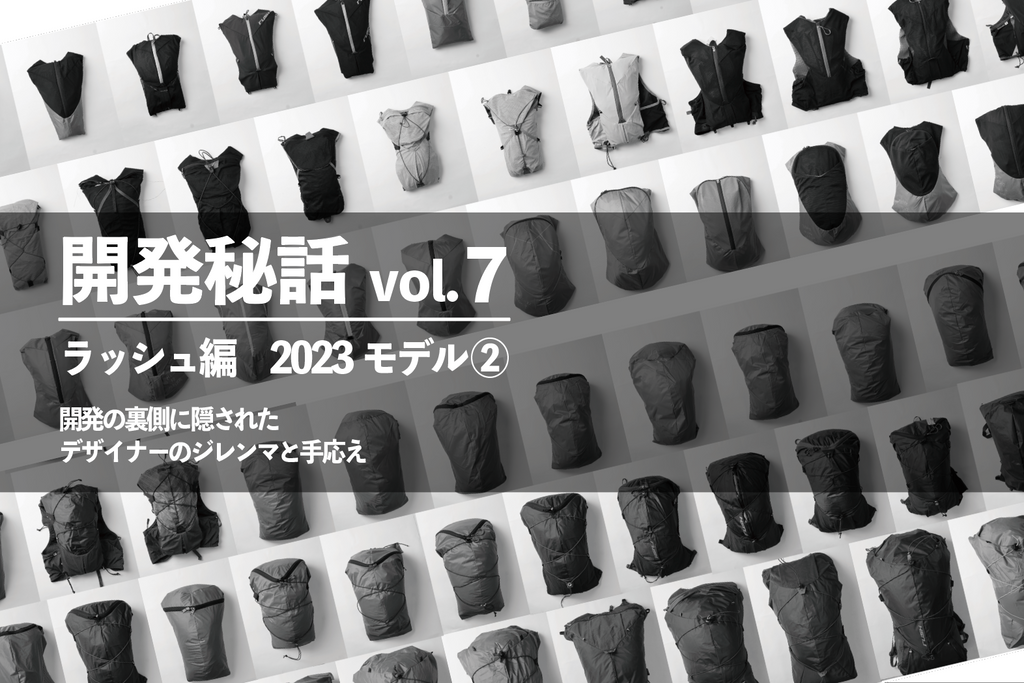
Product History vol.7 Rush 2023 Edition (Part 2)
The designer's dilemma and response hidden behind the development
— Finally, I would like to ask about the new “Rush” that debuted this season. There are 5 items in the lineup: the racing models “Rush 7R” and “Rush 11R”, and the regular models “Rush 10”, “Rush 20” and “Rush 30”.

Actually, I didn't intend to renew all the "Rush" items (laughs). Somehow, I made a prototype backpack of about 15 liters, and I really liked it, and the staff unanimously said, "This is good! "
Codename " SIVA ". It was a little bigger than the UT , and it was a prototype based on the current 20-liter model . However, if we were to commercialize this, the lineup would collapse. There is also a 12 liter model and a 20 liter model. There's no other brand that develops products with such finely tuned capacities (laughs).
>>> Photo of SIVA (Mr. Someya has it?)
Thinking that "Rush" would be destroyed, I gave it a tentative name of " SIVA ", the Hindu God of Destruction. But this was the key to the renewal. In order to put it in the "Rush" series, the lineup itself must be reviewed.
Ultimately, " SIVA " became "Rush 20 ", but even then there were twists and turns. Because "Rush 20 " was quite a popular model. It's been selling well since its release, and I can't let it drop. Judging was not easy.

By the way, I was making "SIVA" in the summer of 2021. Ambassador Masataka Ohata just had a customized version of "Rush 20" used at TJAR (Trans Alps Japan Race), and we started development in 2022, reflecting feedback from practical use.
As a use, there is a moderate amount of luggage and there is also a run element. It's a model targeting so-called fast packing, but it can be used for mountain climbing as well as for mountain races like TJAR, so its high versatility is attractive.
— In this lineup, we also renewed the race model with an “R”.
After the Rush 20, development began on the Rush 11R. This was positioned as a mass-produced model of "UT3", and the image was relatively smooth. "UT3" has an open back panel, but "Rush 11" has an opening at the top.

There is a reason for this, and it is assumed that the "UT3" is completely designed for racing, and luggage is not taken in and out during the competition. However, in order to reduce the stress of packing as much as possible, the back panel opening was adopted so that the main and shoulder equipment of the backpack could be checked at a glance.

For the "Rush 11", we thought about using it in a slightly wider range for mass production. When you're running in the mountains for practice, you probably want to sling your backpack over your shoulders and check your equipment. Assuming the scene where it is actually used, we made it a specification that luggage can be put in and taken out from the top.
However, I was considering various patterns until I got here. V-shaped, V-shaped, vertical opening, etc. In my case, when I come up with something, I make a prototype with various patterns. It's often said that it's hard to make many, but actually this is the best shortcut. Because I can immediately judge the sense of volume and usability.

"Rush 11" is basically for long races such as 100 miles. There are many must-have items, and there are a variety of running environments, so we pursued the optimum capacity to carry a certain amount of equipment, the stability that does not put a burden on the body even on long and long runs, and the ease of use of the pockets. . It reflects the successful inverted trapezoidal high center of gravity design in UT.
— And the Rush 5R for short races.
Actually, the development of "Rush 7R" was very difficult. "Rush 20" and "11R" and "7R" are brotherly items, and I had an image because I had "UT3". I was motivated to make "SIVA", and I was able to make prototypes of "Rush 20" and "11R" in a blink of an eye.

Regarding the "Rush 7R", it is positioned as a racing model, but there was a conflict between whether to make it a "sharp racing model" or "everyone's gentle rush". In the end, I designed it from scratch, but I'm also trying to make a prototype that doesn't have even a shred of so-called "Rush".

In short, considering the practical use in the race, it should have a compartment for essential equipment and a side pocket that can be used while running. It was a process of going back to the starting point, in other words, developing with the application in mind. Looking back at the feedback collected from users, I realized again that the simple and easy-to-use “Rush”-likeness so far has been evaluated.
I made many prototypes, but in the end I decided to go with a soft and simple design with a center zipper specification, which is the origin of "Rush". In the end, we returned to the user's voice and tried to improve the current model and make it evolve normally.
Well, I have a feeling that it will be so. Even if you know the goal, it is necessary to take a detour and check it. By prototyping and verifying with various amplitudes, I can confirm the width of my design and incorporate know-how when I take a detour. Otherwise, I don't think new things will be born.

Creating a product from a questionnaire is an AI-like task that simply provides answers to input. Such a design is not interesting. In order to meet and exceed the expectations of runners, it is necessary to increase the swing range. Therefore, although the "Rush 5R" is a normal evolution, I think that you can feel that it has improved greatly when you carry it on your back, run it, and use it.
Also, there is one episode, but at last year's UTMF (Ultra Trail Mount Fuji), I witnessed Yosuke Yamada in real life when he dropped his must-have item just before the finish line and missed out on the prize. It was a very bitter experience. It might be how the user uses it, but I think it was the naivety of the design as a designer.

So I replaced it with a new pocket. It doesn't look that different, but the opening is made larger. Due to the folding effect, it is difficult to fall even if you put not only a jacket but also a bottle. This is mean.

I tested various things such as running a cord, deepening the pocket, narrowing the opening. It looks good if you make it deeper, but you can't take it out due to the range of motion of the arm joint. I made various prototypes and tried them so that the pockets would not be too deep, but the equipment would not fall out.
— And you also reviewed the regular model.
In all honesty, I was thinking of discontinuing Rush 10. There are “Rush 5R” and “Rush 11R” for racing use, “Rush 20” for daypack, and “Rush 30” for overnight. The lineup is now complete.

I seriously thought, "You don't need it?" But after all, this class is selling well in stores, and it is true that there are many users. Somehow, it was a face-like existence of "Rush". Moreover, it also separates from the last time I talked about "valuing beginners".
That's why I decided to leave a gentle design for entry, and started development with full satisfaction. But it wasn't easy after all (laughs). I went to the Shinjuku Gyoen botanical garden when I was making a prototype, and I saw a nepenthes. Probably because I made it after that, it became like this. Well, but I was like, "This isn't it" (laughs).

I made a lot of different things, but while inheriting the simple design concept of the current model, I adopted an inverted triangle type with a high center of gravity. The fabric is elastic Darlington mesh, and we were particular about the ease of packing. Functionality is also important, but I think I went back and forth thinking about what it should be like as the face of "Lush", which has been loved so far.
— "Rush 30" also brushed up the design.
It basically follows the previous model, but the overall balance is adjusted. Mr. Ohata has been using this model for a long time, so we are improving the details based on his feedback. The front part has been redesigned to fit the body better. Details such as deep pockets and fabric instead of mesh for the top pocket have been brushed up.

After all, it is a perfect model for overnight hiking and fast packing, as well as OMM and adventure racing activities.

It's been a rush, but the back side of the development of the 5 renewal items looks like this. Users can only see the finished product, but it's the answer that we arrived at after many prototypes and verifications. And what I want you to know is that the voices of the runners involved in each model are fully reflected. This “rush” embodies the tagline “Designed by the Runners”.


